AudioCulture
The noisy library of New Zealand music
Te pātaka korihi o ngā puoro o Aotearoa
Shapeshifter
During the late 90s, the jungle/drum and bass scene was one of the most interesting, credible, and vibrant dance music cultures in the world. As the decade progressed, the power of this UK-born genre’s furious breakbeat drums, thunderous bass lines and futuristic melodic and textural sensibilities became increasingly crucial to the development and evolution of New Zealand's rave and nightclub scene.
In May 1999 things went supernova after a group of jazz school students attended a performance by influential London DJ Grooverider. “Grooverider was promoting his Mysteries of Funk album,” recalls Devin Abrams. “We were dancing right up the front of the crowd with a friend of ours, DJ Gooda, and we were buzzing out. I had just smoked the hugest joint with these guys and I said to Redford Grenell, why isn’t anyone playing this music live? Redford was a drummer and a DJ. He knew he could play this sort of music. Redford just smiled and said, ‘fuck yeah! Let’s do it.’”
It became pretty clear that Shapeshifter had legs, and going places was the only option.
Viewed retrospectively, that event was the origin point for Shapeshifter, the quintessential New Zealand live jungle/drum and bass and heavy soul band, a collective that has won considerable fame and sustainable success both here and abroad for their explosive live sets and considered studio recordings.
Pulled together soon after that event, the first configuration of the band saw Abrams and Grenell bringing fellow jazz school students Nick Robinson and Sam Trevethick into the fold, and calling on the services of promising young sound engineer Tiki Taane, also a member of Salmonella Dub, for their live mix.
With Grenell on drums and Abrams specialising in saxophone, they also made use of several synthesisers – a Roland Alpha Juno 6, a Korg MS-10 and a Korg MS-20 – sharing playing duties around between the members. Several shows into their career, it became pretty clear that Shapeshifter had legs, and going places was the only option.
When I spoke to Shapeshifter for the Oct/Nov 2009 issue of Rip It Up magazine, Tiki Taane said, “Andrew Penman from Salmonella Dub really took to them.”
Abrams recalls: “I remember when he called us up to offer us a support slot in Dunedin. This was our fifth or sixth gig ever. We had no profile, and I thought this was the biggest thing ever.”
While touring around New Zealand with Salmonella Dub, Shapeshifter befriended Pylonz (real name James Meharry) of Fabel Music, who Trevethick described to Rip It Up in 2009 as “the Granddaddy of Christchurch Breakbeat”. At the time Fabel Music was operating as a small recording studio and record label. In 2000 Meharry helped Shapeshifter create their debut EP D.N.A and released it for them.
As he told Rip It Up, “At the end of the day Shapeshifter came from a subculture [jungle/drum and bass] … but in saying that, I certainly think they have been the catalyst for a more mainstream popular culture accessing something like drum and bass.”
In celebration of the beginning stages of the process Meharry describes, that year they were awarded the prize for Best New Act at the bNet Music Awards. In 2001 at the same awards they won Best Live Act and Best Electronic Release.
Real Time
Continuing to tour the country to appreciative and increasingly growing audiences, in 2001 they recorded their debut album Real Time, choosing to release it through Auckland electronica label Kog Transmissions. “I think they wanted to hang out with some people who were on the same vibe and could give them couches to stay on in Auckland,” former Kog Transmissions artist liaison Chris Chetland told Rip It Up. “Devin worked ridiculously hard. I mean, they all worked hard, but Devin worked ridiculously hard.”
For Real Time Shapeshifter recorded with Fabel Music affiliated engineer Kaps, with Abrams and Kaps splitting the majority of the production between them. The result was a record that was awarded Best Electronic Release at the 2002 bNet Awards and nominated for Best Electronic Album at the 2002 New Zealand Music Awards. Real Time spawned the singles ‘Tapestry’ and ‘Move With Me’ (featuring Ladi6).
During this time they became known nationally, both through their own tours and acclaimed performances on the summer festival circuit. “We were really excited, because it was all so new to us,” Trevethick told Rip It Up. “We were breaking free from the rulebook. No one was really doing what we were doing. Jumping into a van, and going somewhere where you have massive, fat bass coming out of a synthesiser, that’s just about tearing the roof off a venue – and you're making it!”
Riddim Wise
In 2002, Shapeshifter relocated to Melbourne. As Trevethick told Rip It Up, “We got to the point in New Zealand where we knew we were an underground band, and we weren’t going to make it much further than that … we had a meeting in the gardens in Christchurch one day and decided to go somewhere … it seemed that Melbourne would be the place to go.”
After arriving in Melbourne they got jobs and started working on building a following across Australia. “Breaking into Australia was hard work,” Abrams admits. “We all poured coffee for a living, while Redford worked in a call centre. We didn’t really start getting any traction in Melbourne until our Riddim Wise album.”
In Melbourne, Shapeshifter connected with artist/tour manager Ajay McFadden (AKA Thief or DJ Gsan). Between 2003 and 2007, McFadden worked in tandem with Abrams to oversee Shapeshifter’s development within the Australian market, and their early European/UK shows.
“We were putting our own gigs on,” Abrams recalls. “We supported Salmonella Dub on a couple of national tours, and did a couple of our own tours. We were playing to similar-sized crowds to the ones we were playing to in New Zealand.”
As well as performing in Shapeshifting, during this time Abrams, Trevethick and Robinson began playing DJ sets on the side under the aliases Reno, Sambora and Nicky Research respectively. Performing around Australia regularly, Shapeshifter returned to New Zealand for shows most years.
During 2002 Abrams released the first self-titled EP from his Pacific Heights side project on Reserve Recordings, a subsidiary of Fabel Music that focused on musical/atmospheric drum and bass. The following year, Abrams released Frozen Fears, his first album as Pacific Heights, again through Reserve Recordings. As time went on Pacific Heights would become an important outlet for the other sides of Abrams’s musical personality.
The same year they also established their own record label, Truetone recordings.
In 2004 Shapeshifter released their second album Riddim Wise. “We were about to sign with Virgin [Records] when we releasing Riddim Wise,” Trevethick told Rip It Up. “We came out of the office thinking, hmm, we don’t really get the best vibe from that. So we just decided to do it ourselves, sensed that the independent vibe climate was coming perhaps.”
“It felt dirty,” Abrams explains. "We met Peter Baker from Rhythmethod and realised we could do it ourselves … All we did was set Truetone up as a company, got our friend Dan Motive to design a logo, and that was the birth of our label. It’s released all of our subsequent albums, two Pacific Heights releases, our live album, and J-Dub’s hip-hop album.”
Written, recorded and produced collectively in their studio in Melbourne, Riddim Wise saw Shapeshifter collaborate with New Zealand vocalists Ladi6, Joe Dukie and P Digsss, and call on Evan Short of Concord Dawn for engineering assistance. Released in New Zealand via Truetone, it achieved platinum record sales locally. In Australia they licensed and released it through Inertia Recordings. Riddim Wise spawned three singles: ‘Been Missin’, ‘When I Return’ and ‘Long White Cloud’. That year they were nominated for Best Electronic Album at the New Zealand Music Awards. Their single ‘Been Missing’ also received the award for Most bNet Radio Play at the bNet Music Awards.
MC P Digsss peacekeeper
Back in 2001 Shapeshifter began inviting guest vocalists and MCs to perform on stage with them at shows, in the process taking their traditionalist jungle/drum and bass sound and pushing it into an accessible and soulful space. For the next two years, the regular suspects were MC Mana, Tiki Taane (then known as Rizla) and P Digsss (real name: Paora Apera), who was at the time touring as part of Downtown Brown’s Sunshine Soundsystem. P Digsss would eventually go on to become a full-time member of Shapeshifter. But first there were some hurdles to overcome.
“P Digsss was living in Wellington and we were living in Christchurch,” Abrams recalls. We had just done a show together at a venue called Sub9 in Wellington. We had to leave early the next morning to get the ferry home, so I gave him some money to pay an advertising bill with Radio Active [88.6 FM]. It was around seven hundred dollars and I told him to go in and pay the bill on Monday. I gave him the cash because back then we were a cash band, and we were into a lot of drugs, so everything was cash.” A couple of weeks later, Abrams got a call from Radio Active. “They asked me if I could pay the bill. I was like what the fuck? Are you guys sure? I sent our MC in with the cash. They told me he hadn’t come in.”
Abrams spent the next three months trying to get hold of P Digsss, to no avail. In the intervening time however, P Digsss had moved to Austria.
“Basically we wrote the debt off,” Abrams says. “We decided we were never going to work with him again. Downtown Brown kept on trying to tell us he’d get the money back from P Digsss, or make him work it off to us, but we didn’t care. We didn’t want to deal with him anymore.”
As a compromise, when P Digsss rejoined the band, they made him work OFF his debt over six months.
In 2003 Abrams traveled to London to perform under his Pacific Heights solo alias at a show called Aotearoa Live In London, alongside the likes of Fat Freddy's Drop, Concord Dawn and MC Tali at Fabric Nightclub. “I had just dropped some ecstasy and I was pilling out to the max,” he recalls. “I was having a deep breathe outside on the staircase, and guess who comes out? Fucking P Digsss. I was like, what the fuck man? I’m so pilled out I can’t even give you any shit, which I so wanted to do. He was pilling out as well. I gave him a big hug, asked where the fuck he had been, and told him we missed him. I was so loved up that I invited him back into the band. The last thing I said to him was, bro, do you reckon we could get that money back off you?”
As a compromise, when P Digsss rejoined the band, they made him work off his debt over six months. “We made him do heaps of gigs,” Abrams laughs. “He would always be like, have I paid it off yet? That’s the story of P Digsss joining the band. If he had stayed in New Zealand and kept on making excuses, we would have written him off forever. But he disappeared, I bumped into him in Fabric all loved up, and the band as a full unit was born that evening.”
With his unique Polynesian soul singing voice and unity-oriented lyrics now an integral part of the band, the stage was set for Shapeshifter’s crucial third album, Soulstice.
Soulstice
In 2005, Abrams left Melbourne, relocating to Wellington. “I was having a lot of success with my Pacific Heights solo project,” he explains. “I’d released a Pacific Heights album titled Frozen Fears in 2004. I was getting a lot of bookings in New Zealand. So it was a financial decision to move. Also, I didn’t like a lot of the political choices Australia was making at the time. I felt that Wellington was the cultural capital of New Zealand. I always had an affinity with the place.”
Tiki Taane had recently moved to Wellington, P Digsss was living there, and the drum and bass and live soul music scenes of the capital really spoke to where Abrams was at. Grenell remained living in Melbourne, and so did Trevethick and Robinson. Divided geographically, the band continued to reunite to play spot shows, go on tour and work on song ideas.
Shapeshifter began to place more of an emphasis on performing in Europe and the UK. A key contact at this time was MC Wrec of Mums the Word, an English talent agency and record label. Wrec met P Digsss several years earlier, when he toured New Zealand as the host MC with English live drum and bass band London Elektricity. Reconnecting with P Digsss when he moved to Austria, Wrec arranged for him to come on tour with London Elektricity, leading to a firm friendship.
Wrec told Rip It Up, “I was a fan from the very first time I heard their stuff. To me it was [about] the soul and the space in their music. It took the elements of drum and bass that I’ve always liked and fused it with a unique New Zealand vibe … straight away they stood out, represented where they’re from, and brought something different to the table.”
Over the following years, Shapeshifter were also assisted on their entry into the UK and European markets by Jasper Edwards of Spacific Limited, Coda Agency, The Agency, Primary Talent and DJ/remixer/tour manager John Ayres (AKA JStar). As of 2013 their UK bookings were handled by Malcolm Haynes, Glastonbury Festival’s Dance Village programmer.
‘ELECTRIC DREAM’ “was our signature, our most important song. We still have to finish our sets with it, to this day.” – Devin Abrams
In 2006 Abrams, Robinson and Trevethick temporarily relocated to Kaikoura to record their third album, Soulstice. “I would say there are three very important tracks on that album,” says Abrams. “‘Bring Change’, for the Pacific political nature of it, and the uplifting positive signature of Shapeshifter's sound. ‘Electric Dream’, the song we broke into commercial radio with, which was also our first single to go gold. And finally you had ‘One’. Basically because it was a song the fans owned. It was never released as a single. It was never released as a video. But it meant something dramatic to our fans. It was our signature, our most important song. We still have to finish our sets with it, to this day.”
While they were recording Soulstice, Shapeshifter connected with publicist and band manager Rebecca Caughey. “Becs flew down to Kaikoura to have a meeting with us about publicity for Soulstice,” Abrams recalls. “All of a sudden we were talking about management. Ladi6 had brought her on as her manager a year or so earlier. I asked Ladi what she thought and she said Becs was great.”
Having spent the last few years managing the band, as well as tour managing, working on their label and writing music, Abrams was at his wits’ end at the time. “I was so stressed out at the time,” he admits. “It got to the point where I wasn’t really friends with the rest of the band anymore. The only time I talked to them was when I was angry. I think if we hadn’t brought someone on at that time, the band would have probably been over.”
Following that initial 2006 meeting, Caughey’s enthusiasm, work ethic and skill-set would become a crucial supporting factor in Shapeshifter’s arrival within the top echelons of New Zealand music. During this period of time, Abrams also laid the foundations for his second Pacific Heights album, In A Quiet Storm (2008).
On Soulstice, Shapeshifter collaborated with guest vocalists KP (of Sunshine Soundsystem), Kye (from Budspells) and Ladi6. They also brought onboard session musicians Isaac Aesili, Warren Maxwell, Dave Wright and Kurt Dyer. After recording Soulstice in Kaikoura, Trevethick and Robinson travelled to Waiheke Island to mix, master and produce the album with Evan Short.
With Soulstice they pushed the liquid jungle/drum and bass of their last two albums into a space where soul, dancehall and hip-hop became tangible factors in their sound, in the process creating an atmosphere distinctly New Zealand in origin, which not only paid respectful homage to their influences from America, Jamaica and the United Kingdom, but actually built upon and added to the musical traditions that informed them.
Soulstice obtained gold record sales status in New Zealand in three weeks.
Soulstice obtained gold record sales status in New Zealand in three weeks and has since achieved platinum sales. Shapeshifter received Best Live Act, Song of the Year for ‘Bring Change’ and Album of the Year for Soulstice at the 2006 bNet Music Awards. They also took away Best Electronic Album at the New Zealand Music Awards.
Outside of awards and sales, Soulstice reviewed well locally. Described as a “solid widescreen effort” by NZ Musician, it received four stars in the NZ Herald. Licensed and released in Australia via Pattern, it was also received well across the Tasman. It was a similar story in the UK, where Soulstice was released by Mums The Word Records.
In 2007 Shapeshifter released the album Shapeshifter Live. Recorded September 29, 2006 at the Christchurch Town Hall, the live album archived the final performance on a national tour playing alongside orchestras, which fittingly concluded in their hometown. Six tracks long, Shapeshifter Live contained popular Shapeshifter tracks like ‘Tapestry’, ‘Bring Change’ and ‘One’, as well as an unreleased song, ‘Good Looking’. Shapeshifter Live peaked at No.6 on the NZ Album Chart. Building on the momentum this all afforded them, they partnered up with promotions company Much More Music to begin their now annual New Zealand summer tour series
That same year legendary American rock band Tool asked Shapeshifter to open for them at a show in Melbourne. “They took us out for dinner the night before, and sat on the side of the stage watching our whole set,” Abrams recalls. “I don’t think we were the right act to support them, but they thought it was just great. Redford was fucking buzzed out, Tool’s drummer Danny Carey was standing there watching him play for our whole set. It was really funny seeing Redford’s little drum kit set up next to Danny’s kit, which is one of the biggest drum kit set-ups in the world. Tool was the biggest support slot we’ve ever done.”
The System Is A Vampire
In 2007 Trevethick and Robinson relocated from Melbourne to New South Wales, where they established a home studio. Once they were set up, they began writing towards Shapeshifter’s fourth studio album, The System Is A Vampire.
With this album, they attempted to create something closer to their live sound within the studio environment. “I really wanted to be hands off on that album, because Sam [Trevethick] felt really strong about making a live sounding album,” Abrams says. “Sam and Nick really drove that album. It was their vision.”
With The System Is A Vampire they found a space somewhere in between their dynamic live energy and the pristine sonics of their past recordings, in the process unifying the Shapeshifter of the stage and the Shapeshifter of the studio.
After working up the bulk of it, they mixed and mastered it in Auckland with Evan Short. Following the completion and release of the album Trevethick and Robinson decided to return to New Zealand on a more permanent basis. Trevethick stayed in Auckland, where P Digsss had recently relocated, and Robinson moved home to Christchurch. That year Shapeshifter also toured with Tiki Taane as his backing band while he was promoting the release of his debut solo album Past, Present and Future.
Peaking at No.1, ‘The System Is A Vampire’ went on to become Shapeshifter’s fastest selling album to date.
Released in November 2009, The System Is A Vampire gave birth to the singles ‘Dutchies’, ‘Twin Galaxies’ and ‘System’. Peaking at No.1 on the NZ Album Chart, it went on to become Shapeshifter’s fastest selling platinum-certified album to date. Well received in the local media, it was described by the NZ Herald as “a thrilling extension of the ebb and flow of their visceral live show”. The following year The System Is A Vampire was shortlisted for the inaugural Taite Music Prize.
In 2009 Grenell quit drumming for Shapeshifter, returning home to spend time with his family and take part in musical projects with his sister Amiria Grenell and Fat Freddy’s Drop frontman Joe Dukie. He was replaced by Melbourne based New Zealand drummer Johnny Hooves.
“Johnny Hooves is also a relatively successful drum and bass producer,” Abrams explains. “He's a DJ, a sound tech and he gets drum and bass from all angles. We went to jazz school with him, so we knew he was a heavy hitter. We went and saw him after Redford left the band. He agreed to play for us straight away.”
That summer Shapeshifter embarked on a sold out national tour. The highlight of this was a capacity New Year’s Eve 2009 performance at the Coromandel Gold festival to 10,000 people. They repeated this tour and headlining performance in 2011, to massive audience acclaim.
Signing to Hospital Records, international name issues
Back in 2005, Abrams’ Pacific Heights project was a support act on the debut New Zealand tour by live UK drum and bass band London Elektricity, the very same tour where P Digsss befriended London Elektricity’s host MC Wrec. During the tour Abrams struck up a connection with bandleader Tony Coleman, also one of the bosses of the respected Hospital Records.
“We stayed in contact for years,” Abrams reflects. “We sent him System Is A Vampire and he loved it and wanted to release it. He thought we needed to release it in a DJ’able format first though.”
Hospital Records put together a remix version of System Is A Vampire, also released locally by Truetone Recordings. Tapping high-profile drum and bass, dubstep and hip-hop names like Netsky, Camo & Krooked, Nu:Tone, State of Mind, The Upbeats and The Nextmen for remixes, The System Is A Remix helped further introduce them to the international market, acting as an additional catalyst for continued touring and performance across Europe and the UK.
Following the 2010 release of The System Is A Remix, Shapeshifter became embroiled in an international name-rights battle with UK house music production duo The Shapeshifters, eventually leading to a situation in which Shapeshifter are referred to as NZ Shapeshifter in Europe and the UK, and The Shapeshifters are referred to as The UK Shapeshifters in Australasia and Asia.
“The name thing was huge for us,” Abrams admits. “It’s caused a lot of stress and cost us a lot of money. This executive at a major label, and a DJ, they decided they wanted to make house music. They had really big international success in the mid 2000s with a song called ‘Lola’s Theme’, but they only formed in 2004, and we didn't hear of them until that song was a hit in New Zealand. At the time we were really angry about it, because as far as I’m concerned, everyone has access to Google, and it’s not hard to see someone using a name very similar to the name you want to use has already had some success.”
As a result of the naming rights battle, Shapeshifter lost their momentum with Hospital Records, forcing them to look elsewhere for label support. As of 2013 they are distributed internationally via Universal Music, which as Abrams puts it, “isn't a bad thing”.
Delta
In 2011 Shapeshifter temporarily relocated to Berlin, Germany as a base of operations while touring Europe and the UK. “It was kind of a multitask adventure,” Abrams explains. “We were going over there to get inspiration to write our next album, but we were also going over there so we could say yes to all of these festival offers we get that would have been impractical to do while living in New Zealand.”
‘Delta’ yielded four singles and reached No.1 on the NZ Album Chart.
Written and recorded between Berlin, Auckland and Wellington, Delta, their sixth studio album, saw Shapeshifter working at studios like Woodhill (Auckland), Blue Barn (Wellington), and calling on respected New Zealand drum and bass duo The Upbeats for additional production assistance.
Released in May 2013, Delta yielded four singles ‘Monarch’, ‘Diamond Trade’, ‘Gravity’ and ‘In Colour’, and reached No.1 on the NZ Album Chart. To date it has achieved gold sales certification. Of those singles, ‘In Colour’ has passed gold sales certification, peaking at No.11 on the NZ Singles Chart.
Reviewed well locally and internationally, Delta received four stars in the NZ Herald, who described it as “explosive, pulsating and vividly colourful”. Delta also saw Shapeshifter stepping beyond the liquid jungle/drum and bass, and heavy soul of their past works, in the process drawing influences from electro, moombahton, progressive R&B and pop.
Delta was made available in digital downloads, vinyl and CD packages. They also gave fans the option to buy it in several different tiers of deluxe edition, alongside other products like Shapeshifter skateboards and USB sticks.
During the recording of Delta, Johnny Hooves left the band and was replaced by veteran Wellington session drummer Darren Mathiassen. Soon after the release of the album, Shapeshifter took part in an extensive national tour, before playing shows in Australia, Europe and the UK.
At the 2013 New Zealand Music Awards, Shapeshifter won Best Group and their album Delta won Best Electronica Album. They were also finalists for Album of the Year and Single of the Year.
Outside of their performances as Shapeshifter, Abrams, Trevethick, Robinson and P Digsss all perform club and festival DJ sets from time to time. Trevethick and P Digsss sometimes perform together as The Peacekeepers, and P Digsss can still occasionally be found singing with Sunshine Soundsystem. In recent years Trevethick has branched into solo music production work. In 2011 he produced the jungle/drum and bass song ‘Come Fly With Me’ on Tiki Taane’s second solo album In The World of Light.
Six full-length albums into their career, Shapeshifter continue to divide their time between studio recording and live performance, maintaining strong audiences across New Zealand and Australia and continuing to make inroads into the UK and European markets.
Over close to a decade and a half of existence, their singular blend of jungle/drum and bass, soul, reggae, rock, hip-hop, dancehall and club music has become an established part of our musical landscape. Fiercely independent and innovative, their accomplishments as recording artists and live performers are matched by an equally astute business acumen, which has seen them become one of the true success stories of independent New Zealand music. Showing no signs of slowing down anytime soon, they continue to set new benchmarks for success within that realm.
– Martyn Pepperell, 2014
--
Stars
In November 2016, Shapeshifter released their new album Stars, having teased it by releasing the title track as a single three months earlier. Stars is their sixth album, and the goal was to be exploratory. With the 2014 departure of one of the founding members, Devin Abrams, there was naturally new territory to traverse, even with the replacement – Kora’s Dan McGruer on keyboards and synths – being like a “family member”.
“We didn’t have a vision going into Stars,” Nick Robinson told AudioCulture in 2021. “What we were trying to do is break everything down to nothing, no expectations, and our main focus was to be creative.”
After accumulating 100 ideas for new songs, Robinson and Sam Trevethick worked together in their respective home studios to develop the ideas. Trevethick’s collection of vintage Roland keyboards played a big role in finding the sound, which upon completion, they realised was “astral”.
“Once we whittled them down, Digsss [Paora “P Digsss” Apera], would find the tunes he wanted to sing on and they sort of grew from there,” says Robinson. “He would sing the sorts of things that would be a bit left field to us, that would surprise us, and take the song on another journey.”
Stars was finished at Roundhead Studios, with Trevethick and Robinson co-producing with regular collaborators Dylan Jones and Jeremy Glenn of The Upbeats. As with any Shapeshifter album, Stars needed to strike the balance of being both a great LP and a great live show.
Stars peaked at No.2 on the New Zealand Official Top 40 Album Chart.
“Our heritage is full of lots of different influences and sounds that we have sort of woven into the Shapeshifter story. So, legitimately, we can go to lots of different places” says Trevethick. “But,” he adds, “we do have to play it live.”
“Live energy is so crucial to us and how we present things. It’s like we are entwined with that … I think there was a point in the creation process, where we’re thinking, ‘okay, how would this go live?’ And sometimes that does inform how much information is in the track, how many different instruments there are. Maybe it doesn’t need three different keyboard sounds at once!”
Released on Shapeshifter’s own label A.R.T. Inc, Stars peaked at No.2 on the New Zealand Official Top 40 Album Chart, and toured nationally and abroad, with an international focus on the UK and Europe. At home, they experienced their first sold-out show at Auckland’s Vector Arena.
Speaking to AudioCulture, Robinson attributes this in part to the significant radio play the lead single ‘Stars’ received, which was also nominated for Single of the Year at 2016 New Zealand Music Awards.
Over the years, the group have noticed a new wave of younger fans joining the old guard, and it’s exciting. “It means we can keep going for a few more years,” laughs Robinson.
Rituals
Rituals, Shapeshifter’s seventh studio album, arrived in July 2021. Although Stars began with Nick Robinson and Sam Trevethick alone in the studio, Rituals involved the full group from an earlier stage. “There’s more adoption, when everyone’s all in on the ground floor, when you’re together creating in that moment and when the spark hits,” says Robinson. “If it hits everyone, you’ve got a winner.”
The band was spread across the county, with Robinson in Christchurch, Trevethick in Auckland, P Digsss in Cardrona Valley, Darren Mathiassen in Wellington and Dan McGruer in Queenstown. It meant that when they did get together to create, the sessions were deliberate and intense.
Many of the tracks on ‘Rituals’ were road-tested live and well-known to fans before the album’s release.
“P Digsss, Sam and I would get together at one of our studios, because we’ve all got home studios, for one week each month, or for three days each month, even. And we would just solidly work. Work day and night, for three days,” Robinson told AudioCulture. “We would go away for the rest of that month, listen to it, have ideas, or not listen to it, and come back. And we found that was a really productive way to work. Even though it kind of sounds slow, it was just a real fresh way to work.”
Unlike Stars, many of the tracks on Rituals were road-tested live and well-known to fans before the album’s release, including the singles ‘Found In You’, ‘Ritual (Under Your Spell)’, ‘The Roxxy’, and ‘Light Speed’.
Alongside their usual festival circuits, small venues played an important role in the workshop process. Travelling to small towns such as Methven and Cromwell, Shapeshifter would practise throughout the week before playing a show of new material at local town halls. Being able to gauge the audience’s energy in the intimate venues, and even chat to fans afterwards, offered insights that were then actioned back in the studio.
“I’d produce the songs up to a point where we were happy,” says Trevethick. “And then we were like ‘okay, how can we make this better?’ We want to give this an X Factor. And that’s when we brought Tiki in.”
Bringing Tiki Taane in to co-produce with Trevethick was an easy decision. As Trevethick says, with Taane being their live sound technician, he has seen Shapeshifter “in every iteration and every state possible”.
Rituals was recorded over seven days at Wellington’s Massey University, before Trevethick and Taane finished up the tracks at Taane’s solar-powered home studio in Papamoa. “We used the bones of a lot of those songs. A live take, for example ‘The Roxxy’ – after we recorded that, then we finessed it a little bit and we might add things,” says Trevethick. “But that energy comes from the studio recording. That’s why we bought Tiki in, to kind of steer that energy and cultivate that. Tiki’s got a vibe, a wairua, a very special energy that is so crucial.”
Taane’s idea of using P Digsss’ live vocal takes is unique to Rituals, and they played with different instrumentation such as harpsichords, vibraphones, and using guitar amps for the synthesisers.
“While most drum & bass is synthesised entirely digitally, Shapeshifter bring their instrumental prowess to primarily live compositions, resulting in a raw, organic power,” wrote Muzic.net in a five-star review of Rituals. “The album’s sound is massive while retaining clarity for the all-important melodies and lead-man P Digsss’ soulful voice and lyrics. With shades of both light and dark, dancefloor stompers and more meditative tunes, the result is an album that stays true to their past while also showcasing their musical progression.”
Looking ahead
As of 2021, Shapeshifter have well passed the 20 year mark since the band’s inception, and the pressure to deliver a recognisable Shapeshifter sound is definitely felt, but never acted upon.
“That’s always like the elephant in the room,” says Robinson. “I think as an artist, it’s your responsibility to try to ignore that and just do what you do, because if you start thinking, ‘what do they want?’ then it starts getting a bit shallow.”
Trevethick adds that in the process of ignoring the pressure, their albums do organically land in the right place between familiarity and reinvention, even within the “big envelope” in which they work.
Their ongoing popularity and status within the New Zealand live scene is “humbling” to Robinson and Trevethick, and at times, hard to comprehend. Especially moments such as their sold-out Vector Arena show, or Prime Minister Jacinda Ardern giving Prince Harry and Meghan Markle The System is A Vampire CD and Stars on vinyl.
When Shapeshifter first formed, the future of the entire genre, let alone the group, was uncertain. “In my own mind we still feel underground,” says Robinson. “I think back to 1999, or the mid to early 2000s. The thought was that drum and bass wouldn’t last ... people were moving through genres, and genres were changing so much. Drum and bass had sort of come from jungle and turned into drum and bass, so, was it going to change again? It’s quite surprising to see, in a good way, how massive it still is to this day.”
– Update by Rosie Howells, October 2021
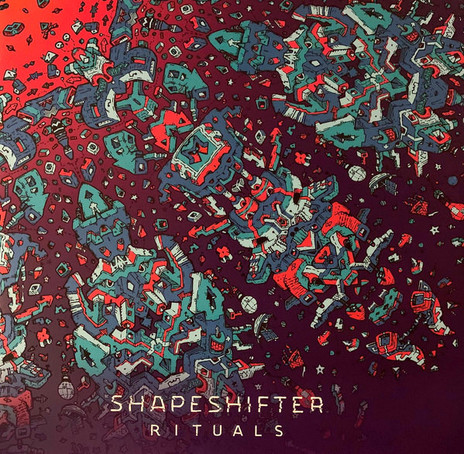


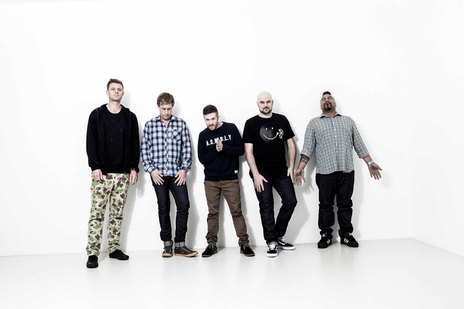
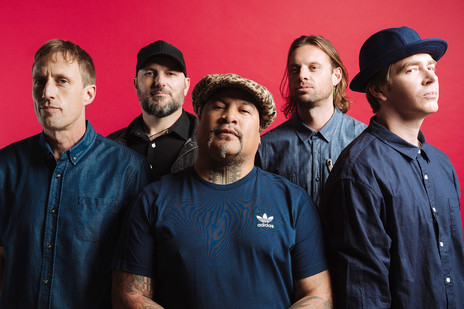
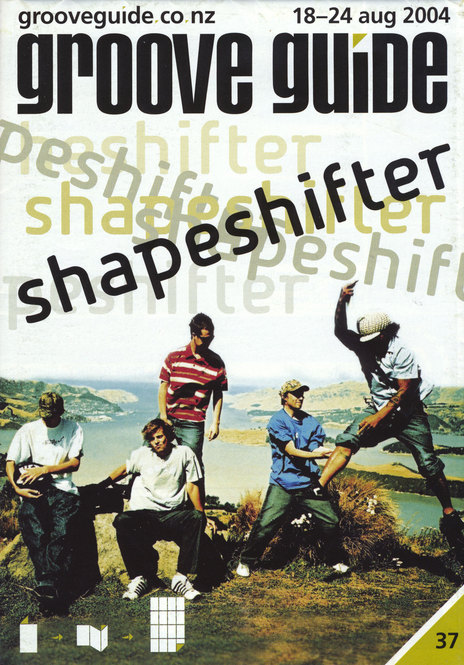
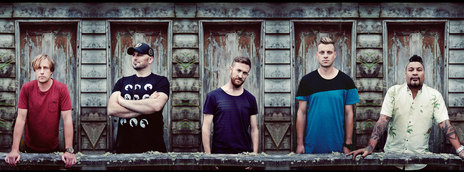
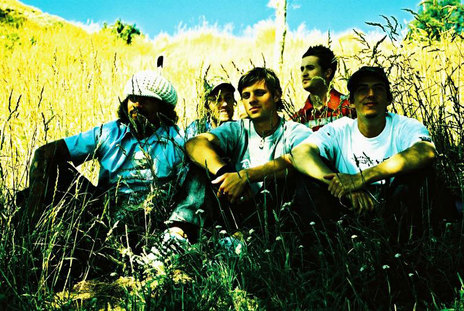
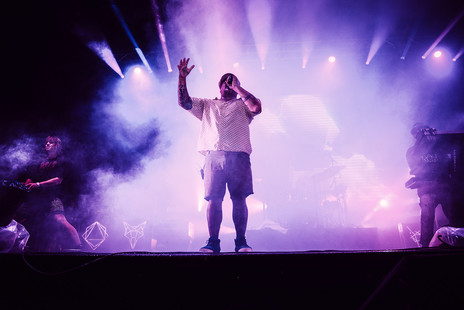


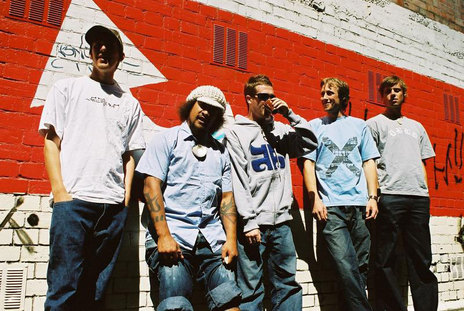
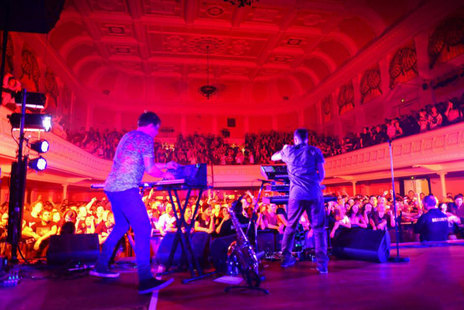
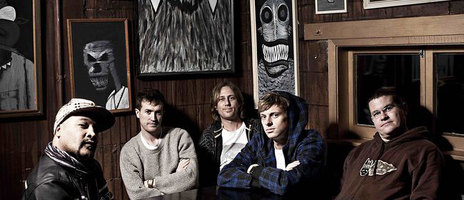

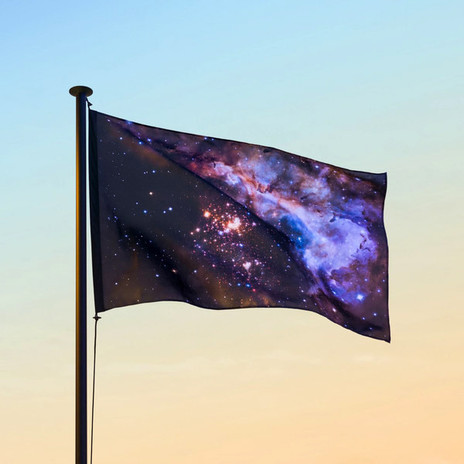
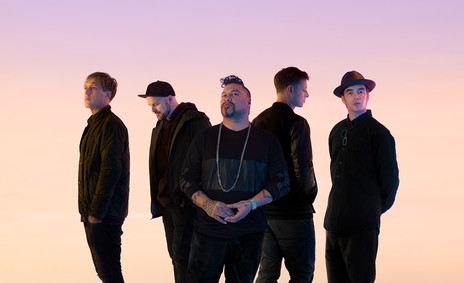
Redford Grenell's father is the New Zealand country music legend John Grenell.
Fabel Music
Low Profile
Truetone Recordings
Hospital Records
Hussle Recordings
BrandNu:X
Salmonella Dub
A.R.T. Inc
Sam Trevethick - guitar, keyboards, percussion
P Digsss - vocals
Nick Robinson - bass, keyboards
Dan McGruer - keyboards, synthesiser
Darren Mathiassen - drums, percussion
Johnny Hooves - drums, percussion
Devin Abrams - saxophone, synthesiser
Redford Grenell - drums, percussion
Visit our sister site
NZ On ScreenMade with funding from
NZ On Air

















